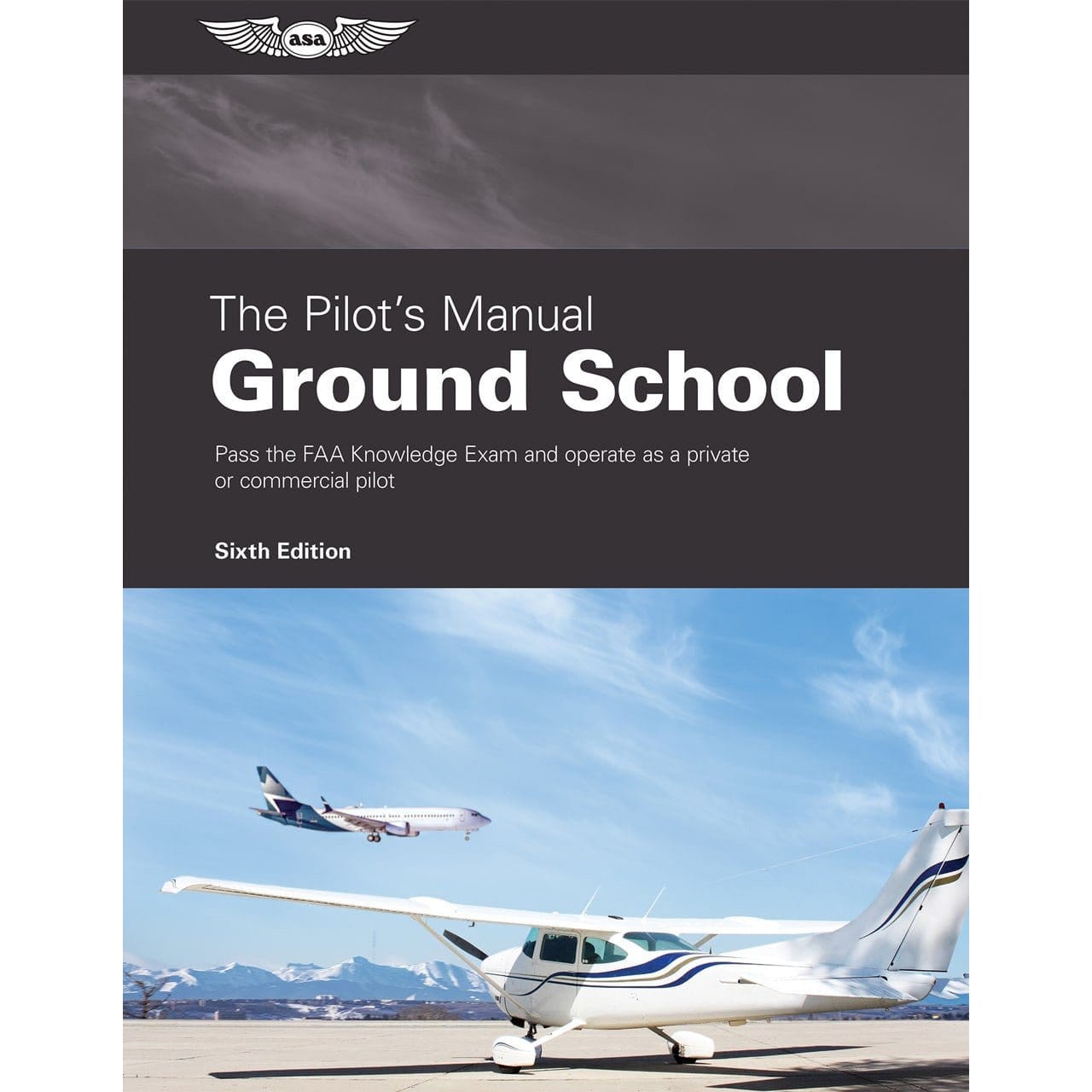A safe, precise landing is the goal of every pilot at the end of their flight, and one of the keys to nailing that perfect landing is approaching it at the proper rate of descent.
Compared to some of the other types of pilot math, rate of descent calculations are very quick and easy. They can be performed mentally or by hand as you set up your approach.

What is the rate of descent?
An aircraft’s rate of descent, or descent rate, is the rate of decrease of vertical height per unit of time. In the United States, the descent rate is measured in feet per minute.
Why is knowing your rate of descent important?
A consistent descent rate during landing allows IFR pilots to stay on the glideslope and VFR pilots to avoid chasing the VASI or PAPI during final. Descend too quickly, and our descent angle will be dangerously steep.
Descend too slowly, and the shallow approach may cause us to run out of runway prior to touchdown. Rate of descent calculations gives us a target rate of descent that will set us up to land safely in the touchdown zone.
How to calculate the rate of descent
During an approach, we need a way to calculate our descent rates quickly and easily. The most common IFR glideslope and VFR VASI or PAPI-guided approaches are set up for a 3-degree descent.
Although the more precise mathematical rate of descent calculations can be done, approximating using one of the two rule-of-thumb methods below is sufficient. These methods can be used to calculate the approximate rate of descent needed to achieve a typical 3-degree descent angle.
Rate of Descent Calculator
Rate of descent calculation method 1
It is important to learn about the rate of descent formula, the first method of calculating the necessary rate of descent is to use the following equation:
Groundspeed x 5
The resulting number is our approximate descent rate in feet per minute. For example, if our groundspeed is 100 knots (GS), and we multiply it by 5, that would equate to a 500 FPM descent rate to achieve a 3-degree descent angle.
Example:
100 x 5 = 500
Rate of descent calculation method 2
The necessary rate of descent formula for a 3-degree angle can also be calculated with the following formula:
Groundspeed ÷ 2 + add one decimal place
After dividing groundspeed in half, add one decimal place to the end of the answer to get your target rate of descent.
For example, if we take our same 100 groundspeed and divide it in half, the answer is 50. Adding another decimal place to the end provides the same 500 FPM descent rate as method 1.
Example:
100 ÷ 2 = 50
Add a 0 the end of 50 to get 500.

How do headwinds and tailwinds impact descent rates?
As you may realize, descent rates are not static. They are based on our groundspeed, and both headwinds and tailwinds impact that groundspeed. Our descent rate will be less with a headwind than it will be with a tailwind because our groundspeed is slower with a headwind than a tailwind.
For instance, we can go back to our previous examples using 100 GS. Now let’s add a 25-knot headwind. We must subtract the headwind speed from our indicated airspeed, giving us a groundspeed of 75 knots. Using method 1 of calculating our rate of descent gives us 75 x 5 which comes out to a 375 FPM descent rate.
If we were traveling at the same 100 knots indicated airspeed but this time, we have a 25-knot tailwind, we would add the tailwind speed to our indicated airspeed giving us a groundspeed of 125 knots. Using method 2 of calculating the descent rate, we divide 125 in half to get 62.5. When we add a decimal place to our answer, it gives us a 625 FPM rate of descent.
Notice that there is a 250 FPM difference in descent rate based on the addition of a headwind vs a tailwind. Due to the significance a headwind and tailwind can make, we calculate our descent rate each time we approach the airfield even if we make this landing frequently and know what our typical descent rate would be in calm air.

How to calculate top-of-descent
We now know how rapidly to descend based on our descent rate calculations, but how far out from the airport should we start our descent? For this, we need to do a top-of-descent calculation.
Like the rate of descent calculation, top-of-descent can be found using a rule-of-thumb method. Note that both rule-of-thumb methods below assume a 500 FPM descent rate.
Top-of-descent calculation method 1
The first way to find a ballpark top-of-descent distance is to use the following series of equations:
The answer provides us with the approximated distance in nautical miles from the airport at which we should start our descent.
For example, let’s run through the above equations assuming our current altitude is 10,000 feet MSL and the airfield altitude is 1,000 feet MSL.
According to our calculations, we should start our descent when we are approximately 27 nautical miles from the airport assuming our calculated descent rate is 500 FPM.
Top-of-descent calculation method 2
Another way to calculate our top-of-descent is using a rule-of-thumb method based on time. For this method, assume 2 minutes of descent time for every 1,000 feet of altitude loss required.
Using the same altitudes as our above example, our calculation would be:
The difference between our altitude and the airfield altitude is 9,000 feet. We divide that by 1,000 and then multiply by 2 minutes to get an answer of 18 minutes. We should start our descent when we are 18 minutes away from the airport. Again, this is assuming a 500 FPM rate of descent.
Takeaways
As we set up for our approach to landing, we need to know how rapidly we should descend so that our angle is not too steep or too shallow. Our targeted rate of descent is based on our groundspeed and can be calculated quickly and easily using one of several simple formulas.
Another calculation that is often done in tandem with rate of descent is top-of-descent. A top-of-descent calculation tells us how far out from the airport we should begin that descent so we make a smooth and safe landing on the runway.
Curious about what other calculations pilots need to make? Learn all the tips and tricks in your own copy of Mental Math for Pilots.
Want to learn more about aviation calculations?
Our guides are designed to help student pilots become professional pilots and for private pilots to brush up on their knowledge and skills.
-
How To Calculate Flight Time Manually (Or With A Calculator)
-
True Course vs True Heading vs Magnetic (How Are They Different?)
Did you find this article helpful?
Do you think we missed anything important or made a mistake? Let us know in the comments below!










6 comments
wamuwi changani
What determines GS at top of descent? What’s the relationship between rate of descent and stall speed
Matthew Curcio
Respectfully, neither KIAS groundspeed nor groundspeed KIAS are a thing. What you mean is KGS.
MK
Hi, I understand that that TOD in the example assumed a 500fpm descent. If the rate of descend is other than 500fpm, how should we adjust the calculation to calculate the TOD? Thank you :)
Dan
Most large airports have arrival routes with crossing restrictions most modern airplanes compute this for you yeah you can do a simple math but in the real world the airplane does it for you
Eric
@mzwane bahlekazi the 500fpm rate of descent, is calculated using GS (100kt) x 5 = 500
for example, If you are flying with a 200kt Ground Speed, you will need to descend at 1000 fpm, (200×5=1000) as you will see on the “Rate of descent calculation method 1” above in this page.
I hope it helped.
mzwane bahlekazi
thanks for this information, i understand that the top of descend distance in this example is determined using 500ft per min rate of descend, so my questions is how did you get to 500ft ? what if my rate of descend was something esle?